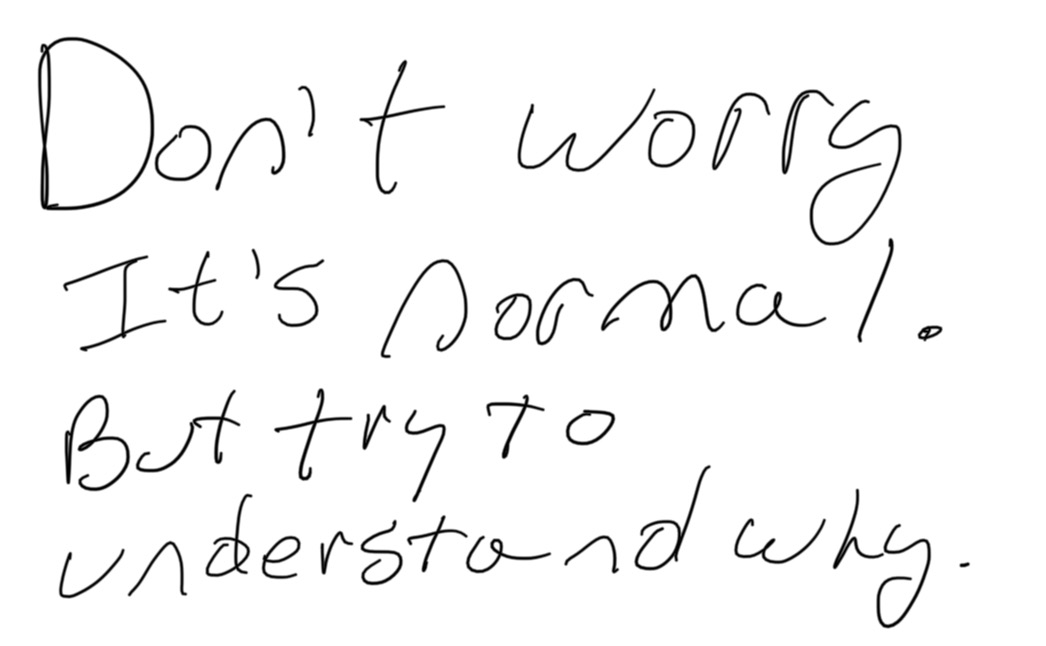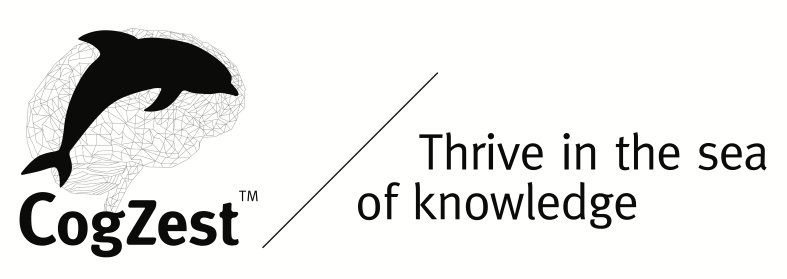Have you ever been unable to put a worry or desire out of your mind? Of course you have — it’s a sign you are not a simple automaton!

To be sure, humans have “executive functions”, which enable us to observe and regulate ourselves. However, truly autonomous agents like humans (and future robots) also (will) have mechanisms that generate and activate motivators with which our executive functions must contend.
So, we are frequently (and necessarily) subject to mental perturbance. In perturbance, one is gripped by a motivator that tends repeatedly to gain one’s attention, even if one were to try to postpone considering it. Cravings, yearnings, addictions, infatuation, desires, urges, obsessions, pre-occupations, and pain all involve motivators that tend to influence our executive functions — whether we want them to or not.
Good songwriters and authors intuitively know this. And so songs and stories often reflect perturbance. Is there a single play of Shakespeare’s that does not involve a character gripped beyond his or her control with a motivator? Consider Romeo & Juliet:
BENVOLIO: “Be ruled by me, forget to think of her.”
ROMEO: “O, teach me how I should forget to think.”
Moreover, while artists do not (yet) explicitly use the concept of mental perturbance, they want to make you think and talk about their work. Perturbance is the holy grail of art.[see: Boyd]
Psychology was underprepared for covid-19
Oddly, Psychology and AI (including cognitive science) have yet to come to terms with this defining feature of human experience. Most researchers have, it seems, failed to grasp the unity in, and significance of, diverse sources of loss of control of attention. Evidence for this is that the technical term for this loss of control, mental perturbance, is still rarely used. (As we’ve argued elsewhere, and I will return to in future posts, “obsession”, “repetitive thought”, and related technical concepts mentioned above do not capture perturbance.)
This lacuna is not merely a scientific problem. Broader culture is compromised by it. Whereas folk psychology has gained much from other areas of scientific psychology, it too has a hole that the concept of mental perturbance could fill.
This means, for example, that when covid-19 burst unwanted into our lives, most people were not equipped to describe a central feature of their experience, namely perturbance. Consider the mentation of hypothetical parents of school-aged children:
- “Will I lose my job?”, “I will lose my job”, or “I have lost my job, how can I get a new one in these circumstances?”
- “I don’t have enough savings to get through this”. “My credit card is maxed out”
- “Who will take care of my kids if I get sick?” “How can I self-isolate?”
- “Are they vulnerable?”
- “How can I even do the grocery shopping?”
- “What if my parents get this, how can I help them?”
- “What if I get this ? how long will it last? What if I die?”
- “My throat is sore, do I have covid?”
- “Uh oh, I have covid”
- “What if my spouse dies of this?”
To capture their experience in a blog, I’ve had to use (few) words. But the mental states those words dimly reflect are not simply words, dry ‘cognitions’, ear-worms or memes. ‘Hot’ mental states are involved — insistent motivators, generated and activated to gain and maintain one’s attention.
There are information processes, serving these motivators, that drive one to solve problems. In typical AI, and even in psychology experiments, goals are largely given from the outside. But truly autonomous agents don’t just get their goals from outside, nor do they simply choose goals top down (e.g., through “means-end planning”). Autonomous agents generate their own motivators asynchronously from executive functions. (They have “Architecture-based” motivation). We have executive functions in order to serve our motivators.
Our recent paper on perturbance
Ever since I was an undergraduate, I’ve been fascinated with loss of control of attention. As a Ph.D. student, when I was exposed to what Aaron Sloman called “emotion”, I realized that repetitive thought could be understood by his concept. However, I also felt that what he was describing should not be called “emotion”. That’s because “emotion”, in psychology, means too many different things. It is at best quixotic to try to get psychologist to accept any particular redefinition of emotion, let alone one coming from Artificial Intelligence. So, I proposed we call his concept “perturbance”. In the “Cognition & Affect” project, we sought to understand autonomous agency, and perturbance. Those projects wound down.
In 2010, I launched my own perturbance-related projects, eventually creating several teams of researchers (in emotion, AI and insomnia).
Last week, my co-authors and I published a substantial update to the theory of perturbance
Beaudoin, L. P., Pudlo, M. & Hyniewska, S (2020). Mental perturbance: An integrative design-oriented concept for understanding repetitive thought, emotions and related phenomena involving a loss of control of executive functions.
The paper presents an ambitious integrative theoretical update to the concept of perturbance. The paper incorporates recent research from several different disciplines and fields within them. We tried to show how the concept of perturbance is relevant to understanding:
- repetitive thought (worry, rumination, etc.),
- emotions (anger, jealousy, etc.),
- limerence (infatuation)
- insomnia (indeed perturbance is in one of the major postulates of my theory of sleep onset and insomnolence),
- grief,
- excessive behaviors (“addictions”) and compulsions,
- the creation and appreciation of art, and more.
A theory of perturbance needs to explain why and how mental perturbance is possible. However, the goal of such theories is not just to explain perturbance. Indeed, the key ideas of that perturbance paper, and what makes the concept of perturbance interesting scientifically, are
- that perturbance calls for a model of the mind,
- reciprocally, understanding perturbance can shed light on understanding ourselves,
- models of mind to account for perturbance and ourselves need to be integrative and design-oriented (involving theoretical AI), and
- such theories can help people (even non-scientists) understand, relate to, and regulate themselves.
This calls for an ambitious research programme, and team work.
Unlike the vast majority of current research in psychology, this interdisciplinary programme must involve teams of software developers including software architects. (You will not find a large scale commercial R&D project that does not employ a software architect. Yet the human mind is vastly more complex than modern software. And software is continuously updated. So one should expect psychological theories to be created by teams including software architects. Yet current theories tend to be created and ‘owned’ by one or two minds and hardly revised after publication.)
Sketch of a motive-processing architecture
The following diagram represents a very coarse-grained, architectural model of motive processing. It depicts executive functions, consisting of
- meta-management processes, which are capable of reflection, deliberation scheduling and other forms of meta-cognition;
- management processes which are fluidly capable of deliberation (evaluating motivators, importance, urgency, and interconnections, planning, scheduling,problem solving), observing, making and implementing deciding.
- asynchronous motivators (affective evaluations varying in insistence). Motivators can be more or less semantically rich and complex. Motivators are tightly coupled with internal monitors; they are together [recursively] motivator generators and activators. A human mind contains innumerable mostly dormant motivators.
- motivational attentional mechanisms: implicit processes involved in protecting (filtering) and redirecting (switching) executive functions, and allocating executive resources available to a motivator.

At any given time, only a small set of motivators can simultaneously direct executive functions.
In perturbance, a motivator, or a cluster of motivators, is very insistent, meaning (amongst other things) that it would be difficult for meta-management to postpone its consideration. If you are very angry at someone, it is difficult for you to keep your mind off of their wrongdoing and what to do about it. In mortal grief, thoughts and feelings pertaining to the deceased interrupt you unpredictably. In the covid era, many people have difficulty falling asleep (experience insomnolence) because insistent motivators (such as the ones listed above) capture their executive functions. Meditation won’t necessarily work. I designed the cognitive shuffle to distract from perturbance and put the mind in a pro-somnolent state. A different example of perturbance is equally familiar: Many dieters find that insistent images of their favorite foods spontaneously distract them.
To understand these instances of perturbance, we need to think in terms of interacting mechanisms of the entire mind. This calls for more detailed unified models of mind and new concepts.
Future publications about mental perturbance (i.e., attention)
I think our recent paper on perturbance is quite accessible. But it’s longish and the concept is somewhat subtle. So I will publish additional materials about it on this blog. If you’re interested in more, ask me on Twitter or via email.
- My upcoming Discontinuities: Love, Art, Mind book deals with perturbance;
- As alluded to on my books page, Michel Aubé and I will write a book on emotion together that will deal with perturbance. Michel created the commitment theory of emotion. (FYI: Most of your perturbances revolve around commitments!)
- I should also point out that the concept of perturbance is very relevant to cognitive cognitive productivity! The Hook Productivity app is meant to help keep you focused. If you need to interrupt your work to search for information, insistent motivators are more likely to distract you than if you stay in flow. Hook is meant to help sustain flow.
Footnotes
* Boyd: In On the Origin of Stories: Evolution, Cognition, and Fiction, Bryan Boyd argues that artists essentially strive to gain and maintain the audience’s attention. He didn’t use the term or concept of perturbance. But I would argue that his theory calls for the concept.

One thought on “Attention! Have you lost it?”